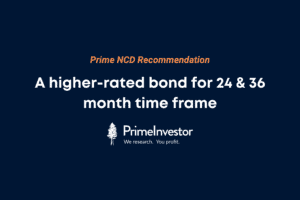Our quarterly review and changes to Prime portfolios for the June quarter, end with the review of the 18 unique portfolios we have for 35 different needs. We had already changed some of the portfolios that had fixed deposits between March and June when deposit rates underwent changes or new govt. schemes were introduced. We’ve changed a few other portfolios now.

The summary of our portfolios’ review for the quarter is as follows:
- We have made no changes in most of the long-term equity-oriented portfolios. The combinations we have used has helped tide the volatility in 2020 well – curtailing downside in equity and participating well in debt with high quality funds. Hence, we see no need to disturb them.
- The limited changes we have made broadly pertain to more shorter duration portfolios where you need income options or where you need better returning debt options. We had to address this with some additions and some minor modification in holding proportions, given the low interest scenario we are in.
- We also had to make changes to a few portfolios that housed a hybrid equity fund (whose performance was flailing) and a debt fund that was getting a concentrated in its exposure.
How do you know what has changed?
Only some portfolios have undergone a change.
For portfolios that you ‘follow’ with us, your PrimeInvestor Dashboard will show you a green bell against the portfolio name. This will alert you to changes in the portfolios you follow. Click this to know the changes and the rationale for the same. You would also have received a mail to take you to this section.
The changes
As mentioned above, you will see the changes pertaining to your portfolio in your dashboard. Each of the portfolio pages will also have a history of the changes made. We are highlighting the key changes here:
Lower FD holding period: In portfolios that hold traditional debt holdings like deposits, we have specifically called out the low interest scenario and suggested entering fixed deposits only with a 1-2 year time frame at this juncture. In other words, you will do well to avoid locking into long-term deposits given that interest rates are low now. In a year or two, when rates pick up, you can renew them at higher rates. Please note that this does not mean you need to break your existing long-term deposits. This applies only for fresh investments.
We have provided the best deposits for this time period (without compromising credit quality) in our Prim Deposits.

New government products: We have introduced a rejigged govt scheme – Floating Rate Savings bonds 2020 (taxable) from RBI in some of the products. At 7.15% half-yearly interest, this option is better than quality deposits from banks & NBFCs.
And remember if you are getting 7.15% in a low interest scenario, then you will benefit more when rates rise, given the floating nature of the product. The RBI Floating Rate Bond’s yield is pegged to the National Savings Certificate, and will be 35 basis points above it. This rate will be reset every 6 months and the bond has a maturity of 7 years. This option provides a better returns than pure bank deposits. Interest will be necessarily paid out every half year; you can either use this for your expense needs or reinvest it into other safe options. We have used this option where income generation or capital preservation is the primary objective.
Another government product that we introduced mid-cycle for retirees was LIC’s Pradhan Mantri Vaya Vadana Yojana. We had had this product in retiree portfolios before, and had to remove it as the government had closed off further investments in this product. When the government a month later re-introduced this product, we put it back into the portfolio. Please that that this product is available for investment only up to March 31, 2023. Interest rate is at 7.4% for those who lock-in before March 31, 2021. Rates may change for those investing in the subsequent 2 years.
Debt fund: The only debt fund change we decided to make was remove Franklin India Savings from a few portfolios. Please note that this fund remains at the top of this category in our performance rating assessment. Our action is not due to the other Franklin funds closing or high credit risk in the fund.
It is due to the higher concentration in some instruments in the portfolio, which was caused as the fund upped cash allocations to handle redemption requirements triggered by the Franklin issue in April (where 6 other debt funds from the AMC were shut down). This concentration is in papers of established groups and are as such not risky. But as a rule, we do not prefer funds with concentrated exposure and do not wish to make any exception.
Please note that while we have given exit options for this fund in some of the portfolios (like income generation or emergency) in some, we have simply suggested curtailing exposure to under 10%. We have introduced different low-risk debt funds where it is needed and in other places, replaced it with RBI Floating Rate Bond.
Hybrid funds: We use hybrid funds in Prime Portfolios to fit either of two needs: one, to bring in a more tax-efficient option in short-term portfolios. For this, we use equity savings funds, as they provide debt-like returns with equity taxation. Two, to give returns a small boost. This is for portfolios where the timeframe is long enough to allow some equity exposure, but not enough to have any options riskier than a large-cap fund. For better returns, we went for aggressive hybrid funds, which are typically lower risk but generate reasonable returns.
One of the funds we picked, and a consistent one for years now – ICICI Prudential Equity & Debt – is faring poorly and has slipped behind large-cap funds in this correcting market. An otherwise steady above-average performer, this performance slump is thanks to a value-heavy portfolio and changes it has made in this direction. This can keep returns subdued a while longer. Because this long-term view does not fit with a shorter-term portfolio, we decided to remove it.
We have been observing that aggressive hybrid funds are increasingly becoming more unsteady, with few funds managing to hold returns and other metrics above average. For this reason, we are now preferring simple large-cap options for short-term portfolios with a higher debt exposure. We have therefore suggested stop SIPs in this fund and provided alternatives through simple equity and debt funds; some already existing in the portfolio.
Points to note when you look at the portfolio changes
- When we replace a fund, it does not mean you need to exit it. We have suggested the course of action for every change. That is – where there are SIPs, whether to stop them; for lumpsum or for SIP investments already made, whether to hold them.
- The portfolio allocation, fund changes and allocation changes are meant for those specific portfolios. Do not try to apply the same recommendation across other Prime Portfolios or other portfolios you have on your own.
- With options such as deposits, even when we change a tenure or a deposit, there is no need for you to prematurely exit your existing deposits. The call applies only for new investments.
- The review does not alter the way you invest – whether through SIPs or through periodic lump sums.
Once our portfolio builds some track record, we will annually do a performance round up of the portfolios.
You can also see all the other reviews for the quarter listed here (note that there were no changes to Prime ETFs and Prime Deposits):




2 thoughts on “Quarterly review – What’s changed in Prime Portfolios, our readymade portfolios”
Hello Team,
The Floating Rate Savings bonds 2020 (taxable) from RBI seems to be a good option, unfortunately most of the banks (as per the RBI notification) seem to be accepting only the physical applications. Are you aware if there is any medium to apply online?
Hello sir,
The RBI does mention that applications may be done online, but this will depend on whether the bank supports an online process. The application form can be downloaded and filled from some banks (like ICICI Bank) but you may still have to go to the bank branch in order to process it.
Thanks,
Bhavana
Comments are closed.